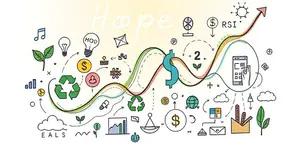As our planet faces mounting environmental challenges, crowdfunding has emerged as a powerful tool to finance green solutions. From grassroots initiatives to global ventures, the choice between donation-based and investment-based crowdfunding models shapes not only the capital raised but also the expectations and outcomes of sustainability projects.
Understanding Crowdfunding Models
Crowdfunding harnesses the collective power of individual backers through various online platforms. Broadly, four models dominate the sustainability space:
- Donation-based crowdfunding invites contributors to give without expectation of financial return, fueling charitable and community-driven environmental actions.
- Reward-based crowdfunding offers backers non-monetary incentives—products, recognition or early access—to support innovative green products and pilot programs.
- Equity or investment crowdfunding allows participants to become shareholders, blending impact goals with the pursuit of profit-sharing or dividends.
- Social impact or hybrid crowdfunding combines modest financial returns with clear social or environmental metrics, appealing to mission-driven investors.
Each model attracts distinct motivations, from pure altruism to strategic impact investing, and the choice often depends on project size, regulatory requirements, and backer preferences.
Market Growth and Impact Statistics
The global crowdfunding market is projected to reach $1.20 billion in 2024 and $1.27 billion by 2028, reflecting steady growth driven by digital innovation and social awareness. North America commands the largest share at 40.43% of the market in 2023, while Europe follows closely, benefiting from harmonized regulations under initiatives like the EU’s Financial Innovation Act.
Within this market, equity crowdfunding is set to expand from $2.71 billion in 2025 to $3.25 billion by 2033, highlighting a growing appetite for market-rate returns alongside positive outcomes. Meanwhile, GoFundMe alone has facilitated over $25 billion in donations by 2022, demonstrating the immense scale of the donation-based approach.
Investment vs. Donation Approaches: Pros and Cons
When deciding between donation and investment models, project leaders must weigh the unique advantages and challenges of each approach.
Donation-based crowdfunding excels in mobilizing communities rapidly for urgent environmental relief and localized sustainability efforts. Contributors feel a sense of immediate impact, receiving project updates or symbolic tokens rather than financial gains. However, donor fatigue and limited individual gift sizes can cap overall funding.
Investment-based crowdfunding appeals to those seeking to couple social benefit with profit. Regulated by authorities like the SEC in the US or ESMA in Europe, these platforms offer transparency and governance. Surveys indicate that 74% of impact investors achieve market-rate returns, with 14% earning near-market returns and 12% accepting below-market outcomes to preserve capital.
Success Factors and Emerging Trends
Successful sustainability campaigns share several critical elements. Projects that embed robust and clear environmental metrics often raise 31% more capital than those without transparent impact reporting. Meanwhile, millennials aged 24–35 lead the pack as active backers, blending digital fluency with a passion for social change.
- compelling storytelling and transparent reporting to engage backers emotionally and rationally
- alignment with Sustainable Development Goals to resonate with global impact frameworks
- seamless cross-border investment opportunities enabled by harmonized regulations
- diverse investor motivations and expectations to tailor rewards or financial terms
- Strategic use of multimedia and social media amplification to expand reach
Despite these strengths, the overall success rate hovers around 22–23%, with sustainability-focused campaigns achieving slightly higher odds when they demonstrate tangible outcomes and rigorous metrics.
Choosing the Right Model for Your Project
Aligning project objectives with the appropriate crowdfunding model can accelerate success. Smaller-scale or community-driven initiatives benefit from donation-based platforms like GoFundMe or JustGiving, where speed and simplicity reign.
Product innovations and pilot programs may thrive on reward-based platforms such as Kickstarter or Indiegogo, leveraging pre-orders and prototype previews. Startups seeking growth capital should consider equity crowdfunding platforms like Seedrs or Crowdcube, where regulatory compliance ensures investor protection.
Hybrid options, including Trine and Lendahand, cater to projects aiming for modest returns alongside social outcomes, appealing to those who prioritize both mission and margin.
Looking Ahead: The Future of Sustainability Crowdfunding
As regulatory environments evolve, particularly in the EU with measures to simplify cross-border fundraising, crowdfunding stands poised to unlock unprecedented capital flows for sustainability. Impact investors are increasingly demanding evidence of outcomes, driving higher standards for data collection, monitoring and reporting.
Ultimately, the choice between donation and investment models need not be binary. Blended approaches can harness the passion of donors and the financial backing of impact investors, forging a path toward scalable, equitable solutions to global environmental challenges.
The journey to a sustainable future begins with collective action. By selecting the right crowdfunding strategy and prioritizing transparency, project leaders can transform visionary ideas into real-world impact, inspiring communities and markets to rally around the planet’s most pressing needs.
References
- https://www.absrbd.com/post/crowdfunding-statistics-2024
- https://www.arbor.eco/blog/sustainability-statistics
- https://www.globalgrowthinsights.com/market-reports/equity-crowdfunding-market-111169
- https://www.sustainalytics.com/esg-research/resource/investors-esg-blog/your-insights-needed-global-sustainable-investment-data-and-research-survey
- https://thegeca.org/blogs/equity-crowdfunding-trends-2025/
- https://lenderkit.com/blog/from-vision-to-action-crowdfunding-for-social-impact/
- https://www.investopedia.com/terms/c/crowdfunding.asp
- https://www.morganstanley.com/insights/articles/sustainable-investing-interest-2025










